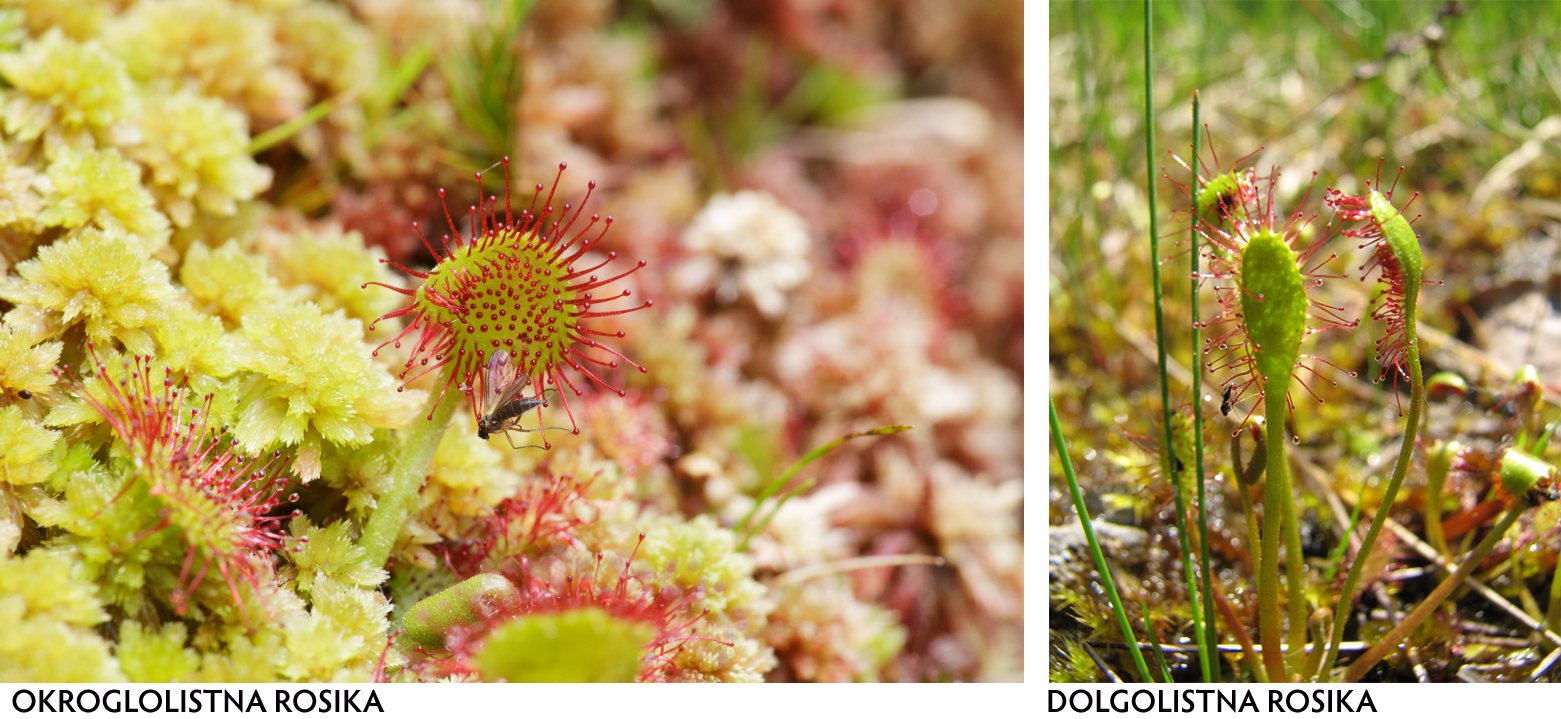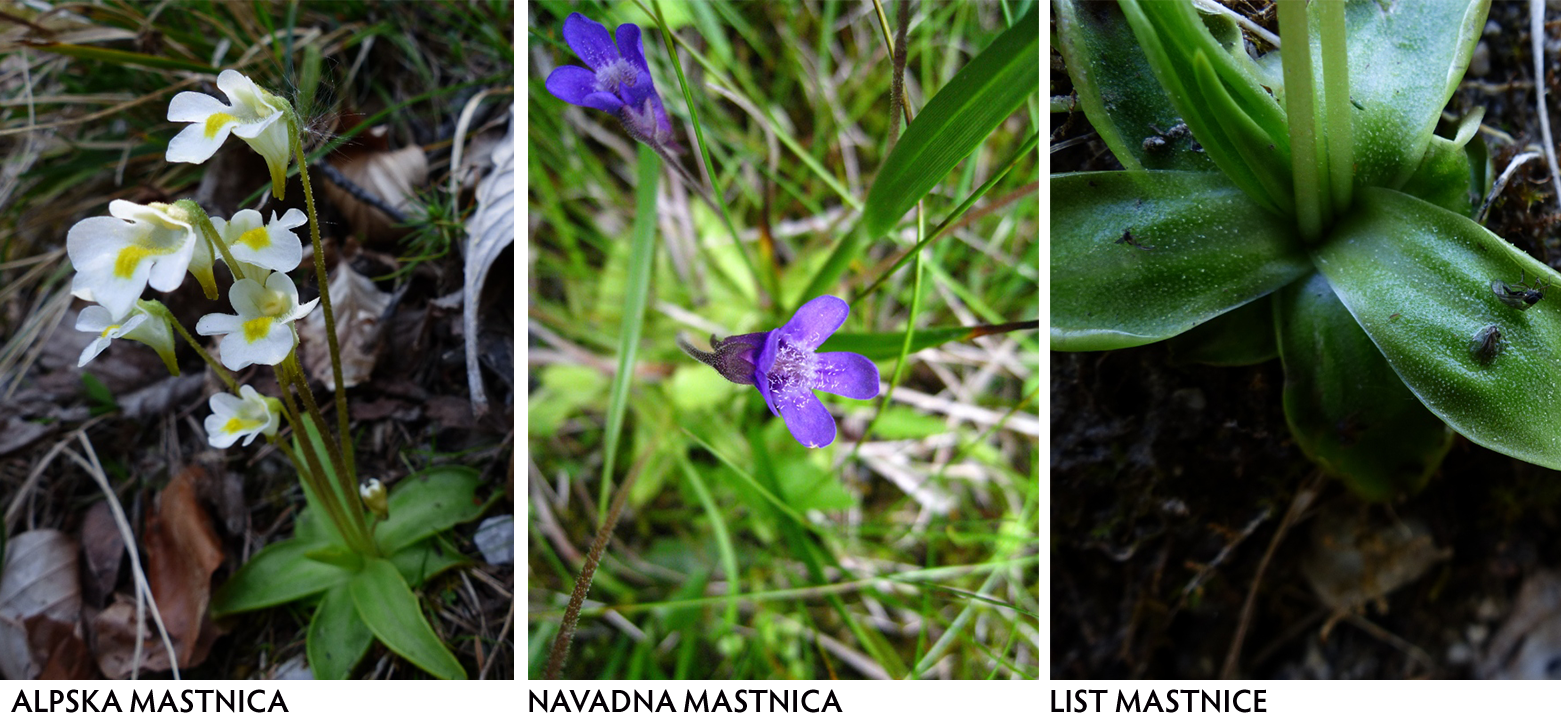Did you know that also carnivorous plants thrive in Triglav National Park?
The Round-leaved sundew catches prey with sticky droplets on its leaves. These droplets trap the insect, and as it tries to escape, it touches other glandular growths, which further stick the prey to the leaf. The irritated glands then curl inward and wrap the insect. The plant then secretes digestive juices that decompose the insect, while specialized hairs absorb the nutrients.
A similar species is the Long-leaved sundew, which does not grow in the high peat bogs of Pokljuka.

Alpine and Common butterwort are distinguished by the color of their petals. Alpine butterwort has white petals, while Common butterwort has pink ones. Both species also trap prey using sticky leaves. The glandular growths are less obvious than those on sundews, but they serve the same function.

Carnivorous plants thrive in mineral-poor habitats such as high and low peat bogs, swamps, and certain rocky substrates.
All of them are protected and are endangered due to the loss of their habitats. The protection of bogs as part of the VrH Julijcev project will contribute to the preservation of these special and rare plants.

Thank you.

